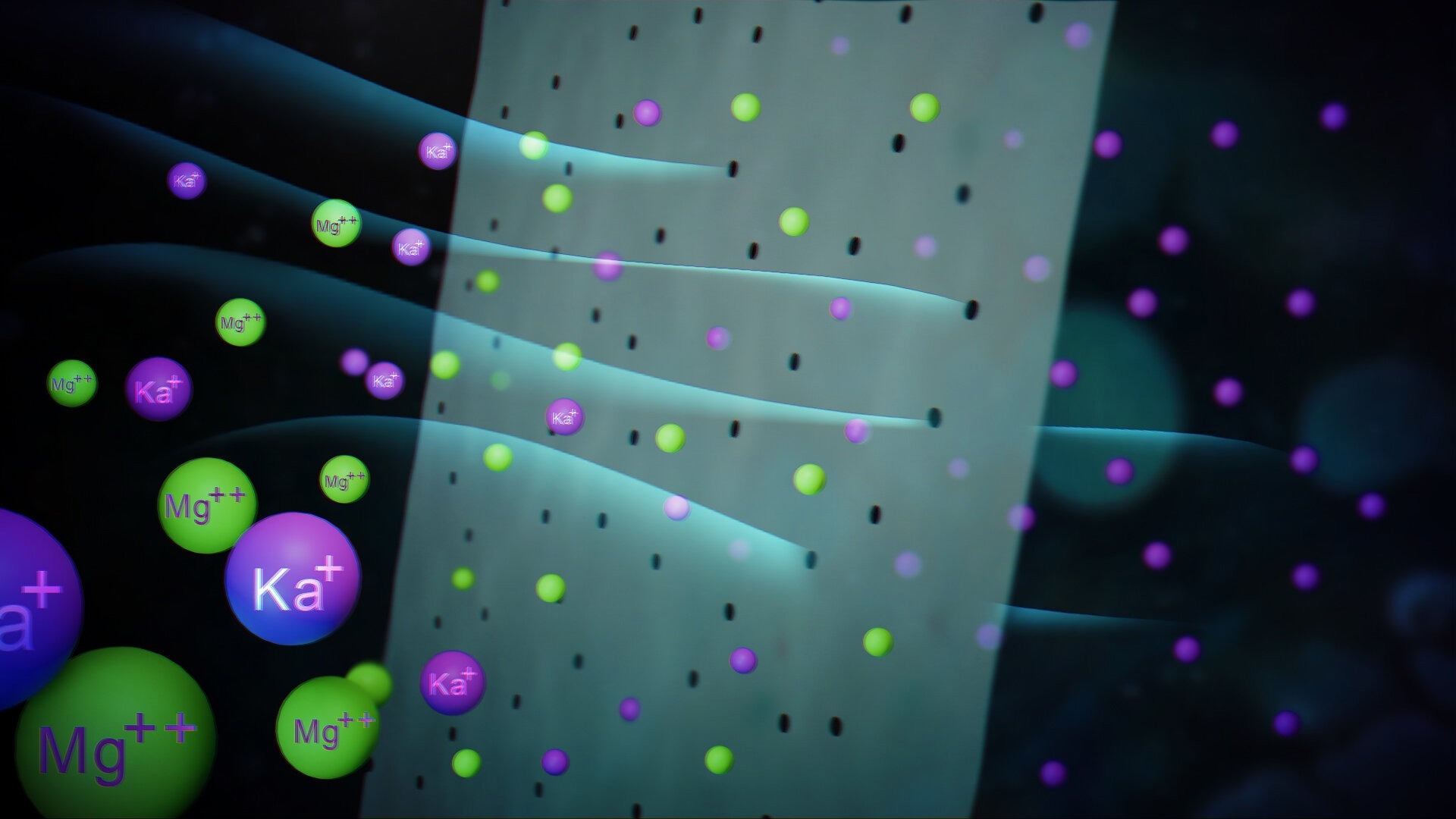Reviewed by Lexie CornerSep 26 2024
Researchers from the Max Planck Society's “Synthesis of Macromolecules” Department, under the direction of Director Tanja Weil, have developed a membrane just 20 nm thick that can efficiently separate various ions and even mixtures of colors. The study was published in the journal Advance Materials.
 An “ion sieve” made of the material “polydopamine” could, in the future, enable the production of efficient filters that can also filter according to chemical properties. Image Credit: Max Planck Society
An “ion sieve” made of the material “polydopamine” could, in the future, enable the production of efficient filters that can also filter according to chemical properties. Image Credit: Max Planck Society
The principle of filtering materials based on size is well known: a sieve lets fine particles pass through while retaining larger ones. This concept applies to brewing coffee, where fine coffee grounds remain in the filter, allowing water and aromatic compounds to flow through. However, when it comes to separating chemical substances, such as colorants in water or ions with similar sizes, size-based filtration alone is not sufficient, and more advanced techniques are required.
Biological systems achieve this separation naturally through cell membranes, which facilitate specific chemical reactions in their thin "pores." Reproducing this function in synthetic membranes has posed a significant challenge.
Researchers have now developed a polydopamine membrane—similar to the material found in mussels—using an electropolymerization method.
This membrane features sub-nanometer-sized channels, or "sieve holes," with unique surface chemistry. This enables the separation of divalent ions (like doubly charged magnesium) and monovalent ions (like singly charged sodium), even when they are similar in size.
Such easily producible membranes are of great interest in applications. This makes it possible, for example, to produce more efficient filters for water, e.g. for industrial waste.
Christopher Synatschke, Max Planck Society
The researchers compared the effectiveness of their membrane to others and found it achieved remarkably selective separation between monovalent ions and larger species, outperforming any membrane developed so far.
They suggest that the new polydopamine membranes could open up new applications, given that the material is not only biocompatible and environmentally friendly but also easily adaptable through chemical modification.
Journal Reference:
Yu, J., et al. (2024) Ion and Molecular Sieving With Ultrathin Polydopamine Nanomembranes. Advanced Materials. doi.org/10.1002/adma.202401137.